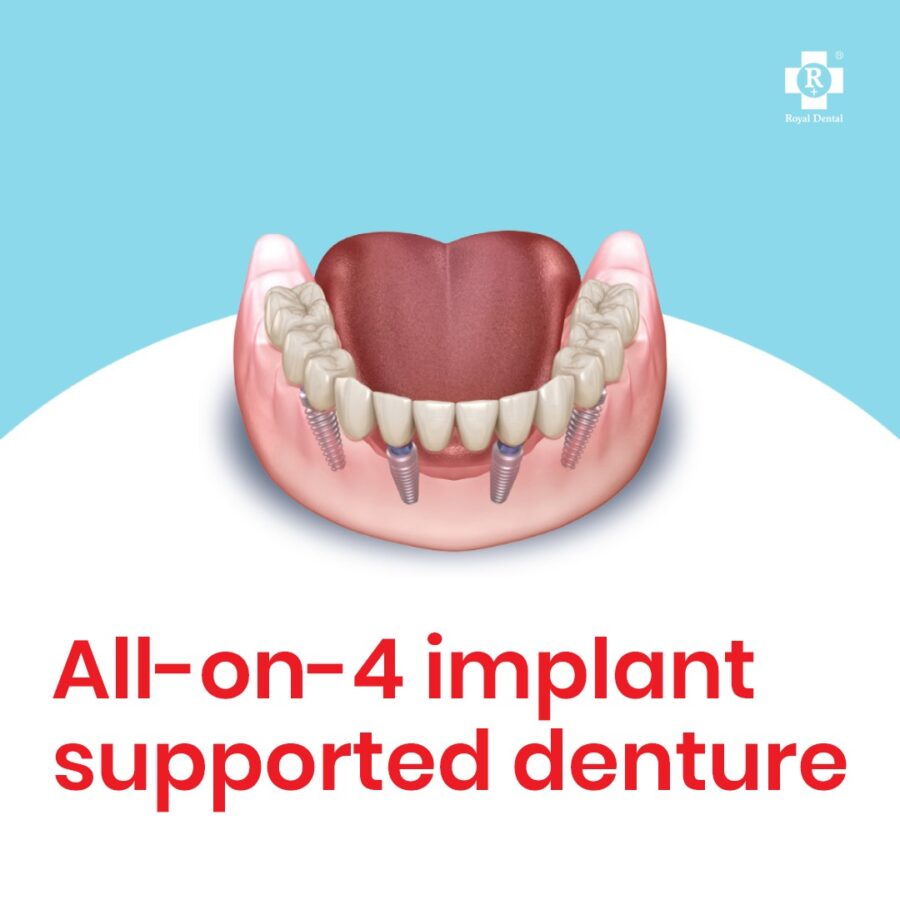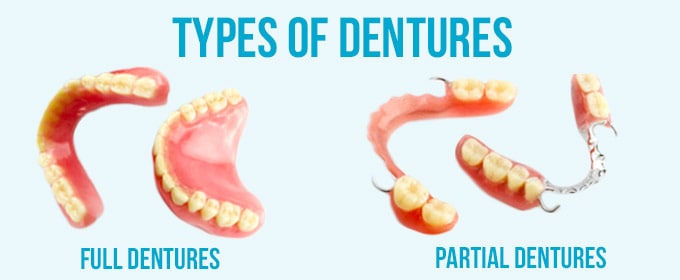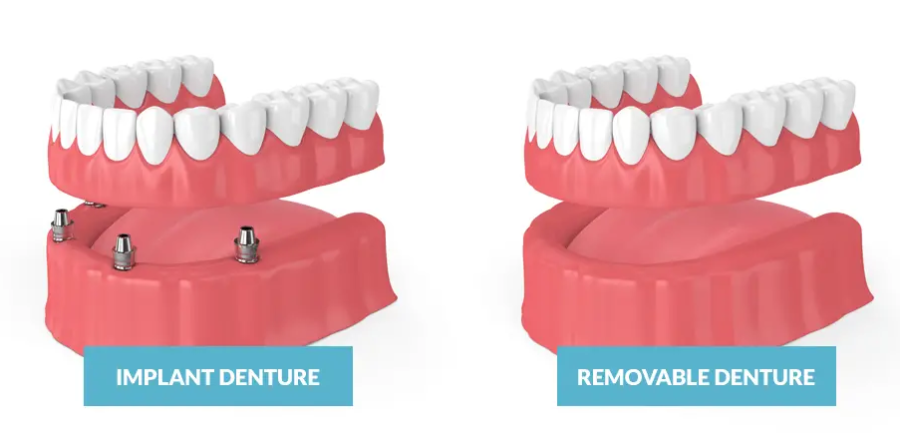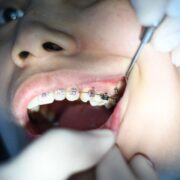It is impossible to overestimate the importance of a self-assured smile in a society where smiles are the global language. Partial and Complete Dentures become functional and an artistic project for those going through the process of losing their teeth. By using his knowledge to demystify the function and arrangement of dentures, Dr. Chirag Chamria of Royal Dental Clinics turns this dental procedure into an empowering experience.
What are Dentures?
Dentures serve a crucial purpose in dentistry by providing a functional and aesthetic solution for individuals who have lost one or more teeth. The primary objective of dentures is to replace missing teeth, thereby restoring the natural appearance of the smile and facilitating essential oral functions. Here, we delve into the purpose of them and explore the two main types: complete dentures and removable partial dentures.


Purpose of Dentures
Restoration of Aesthetics
Dentures play a pivotal role in restoring the aesthetic appeal of a smile. Tooth loss can significantly impact one’s appearance, leading to a loss of self-confidence. Dentures, designed to closely resemble natural teeth, help individuals regain a complete and attractive smile.
Functional Rehabilitation
Beyond aesthetics, dentures contribute to the functional aspects of oral health. Missing teeth can affect speech, chewing ability, and overall oral function. Dentures enable individuals to speak clearly, eat a varied diet, and maintain proper oral hygiene.
Prevention of Oral Health Issues
Gaps left by missing teeth can lead to a variety of oral health issues, including shifting of adjacent teeth, bite misalignment, and potential jaw joint problems. Dentures fill these gaps, preventing the occurrence of such problems and promoting overall oral health.
Enhancement of Confidence
Losing teeth can have a profound impact on self-esteem and social interactions. Dentures provide individuals with a renewed sense of confidence, empowering them to engage in social activities without concerns about their smile.
Customized to Individual Needs
Dentures are not a one-size-fits-all solution. They are customized to suit each patient’s unique oral anatomy, preferences, and specific tooth loss patterns. This customization ensures a comfortable fit and a natural appearance.
Types of Dentures
Complete Denture
A complete denture is a full set of artificial teeth that replaces all the natural teeth in either the upper or lower jaw, or both. Ideal for individuals who have lost all their teeth in a particular arch, complete dentures restore both the aesthetic and functional aspects of the smile.

Removable Partial Dentures
A removable partial dentures replaces only a few missing teeth and is designed to blend with the remaining natural teeth. Suited for individuals with some natural teeth remaining, removable partial dentures provide a cost-effective and aesthetically pleasing solution for filling specific tooth gaps.
Setup for Dentures
Denture setup is a painstaking procedure that calls for the employment of several diagnostic tools and equipment. In order to ensure precise measurements, impressions, and corrections during the denture fabrication process, this preparation is essential.
Diagnostic Instruments
- Mirror: A dental mirror aids in visualizing hard-to-reach areas inside the mouth. It allows the dentist to examine the patient’s oral cavity, teeth, and gums, providing a comprehensive view for an accurate diagnosis.
- Probe: The dental probe is a slender, pointed tool used to assess the health of the gums, measure pocket depths, and identify potential dental issues. It aids in identifying areas of concern before the denture setup begins.
- Tweezer: Tweezers are used to handle small dental materials and components with precision during the denture setup. They play a vital role in the placement and adjustment of various elements.
- Spoon Excavator: This instrument is designed for the removal of soft, carious dentin during the tooth preparation phase. It ensures that the teeth are adequately prepared for the denture fitting.
- Kidney Tray: The kidney tray serves as a receptacle for holding and organizing dental instruments during the denture setup. It keeps the tools within easy reach for the dentist, promoting efficiency and hygiene.
- Gauze: Gauze is used to control moisture and keep the patient’s mouth dry during various stages of the denture setup. It is essential for achieving accurate impressions and measurements.
- Cotton Holder: The cotton holder is a tool used to handle and place cotton rolls inside the patient’s mouth. Cotton rolls assist in absorbing saliva and maintaining a dry field during the denture preparation process.
- Waste Receiver: A designated waste receiver helps maintain cleanliness in the dental workspace. It ensures proper disposal of used materials and prevents contamination during the denture setup.
- Occlusion Strip: Occlusion strips are thin, flexible materials used to assess the patient’s bite and occlusion. They aid in achieving proper alignment and balance between the upper and lower teeth for a comfortable denture fit.
Removable Partial Dentures
Primary Impression
- Alginate Powder: Dental impression material.
- Flexible Rubber Bowl: Used for mixing alginate.
- Curved and Straight Spatula: Instruments for Mixing and Applying Alginate.
- Perforated Trays: Trays with perforations carry the impression material into the patient’s mouth.
Try-In
This stage allows the dentist to check the fit of the partial dentures in the patient’s mouth before the final denture is fabricated.
- Mackintosh Sheet and Green Cloth: Maintains cleanliness.
- Wax Sheets: Used for making adjustments to the denture.
- Chip Blower: Removes excess debris.
- Instruments (carver, wax spatula, wax knife): Used for shaping and adjusting the wax.
- Denture Adhesive (FIXON): Adhesive is used if necessary to secure the partial denture in the patient’s mouth.
Denture Delivery
The final stage is where the completed denture is placed and adjusted in the patient’s mouth.
- Mackintosh Sheet: Maintains cleanliness.
- Micromotor Handpiece: motorized tool for precision adjustments.
- Sandpaper: Used for refining surfaces.
- Instruments (Carver, Wax Spatula, Wax Knife): Used for final adjustments.
- Burs: Rotary cutting instruments for shaping.
- Rubber Bowl: Used for mixing materials.
- Denture Adhesive (FIXON) (if necessary): Ensures stability.
Complete Dentures
The process of making a full denture is painstaking and requires many steps, all of which are necessary to ensure the finished prosthesis fits correctly and functions as intended. Let’s examine the process of making a full denture, paying particular attention to the final impression, border molding, and primary impression.
Primary Impression
The initial step involves taking the first impression to record the oral structures.
- Impression Compound: Used to capture the initial impression of the patient’s oral structures.
- Non-Perforated Trays: Solid trays to carry the impression material into the patient’s mouth.
- Gauze: Assists in controlling moisture and creating a dry environment.
- Instruments (Carver, Wax Spatula, Wax Knife): Used for manipulating and applying impression compound.
- Vaseline: Applied to the trays to prevent the impression material from sticking.
- Rubber Bowl: Used for mixing the impression compound.

Border Moulding
This stage involves recording the border of the upper and lower arches to ensure the denture fits snugly.
- Mackintosh Sheet: Maintains cleanliness during the procedure.
- Instruments (Carver, Wax Spatula, Wax Knife): Used for shaping and adjusting the wax during border molding.
- Micromotor Handpiece: Motorized tool for precision adjustments.
- Greenstick Compound: A pliable material used for border molding.
- Burs: Rotary cutting instruments for shaping.
- Matchsticks: Assist in creating defined borders.
- Spirit Lamp: Provides heat for manipulating wax during the process.
Final Impression
This stage captures the final impression, or replica, of the oral structure for precise denture fabrication.
- Impression Paste (Zinc Oxide Eugenol Paste): Consists of a zinc oxide eugenol paste and a catalyst paste for creating the final impression.
- Glass Slab: Provides a smooth surface for working with dental materials.
- Instruments (Carver, Wax Spatula, Wax Knife): Used for manipulating and applying the impression paste.
- Vaseline: Applied to prevent the impression material from sticking.
Jaw Relation Dentures
Mackintosh Sheet: A protective covering to maintain cleanliness during the procedure.
Green Cloth: Provides a sterile surface for the dental tools and materials.
Wax Strips: Used to help establish the relationship between the upper and lower jaws.
Chip Blower: Removes debris and excess material for clear visibility.
Instruments (Carver, Wax Spatula, Wax Knife): Essential tools for manipulating and shaping wax strips.
Rubber Bowl: Used for mixing materials and maintaining a clean working environment.
Glass Slab: Provides a smooth surface for working with dental materials.
Spirit Lamp: Used to heat and soften materials like wax for molding.
Matchstick: A tool for precise adjustments and measurements.
Ruler and Marking Pen: Instruments for measuring and marking the relation between jaw arches.
Dappen Dish: Container for holding liquids or materials during the procedure.
Thread: Used for precise measurements and creating reference points.
Hot Plate: Provides controlled heat for specific procedures.
Try-In
To check in the patient’s mouth if the denture is correct, so that changes can be made before final denture is made in the lab.
Mackintosh Sheet: Ensures cleanliness during the try-in procedure.
Green Cloth: Maintains a sterile environment.
Wax Sheets: Used for making adjustments to the denture.
Chip Blower: Removes excess debris for a clear view.
Instruments (Carver, Wax Spatula, Wax Knife): Essential for shaping and refining the wax during the try-in.
Rubber Bowl: Used for mixing materials during adjustments.
Spirit Lamp: Provides heat for manipulating wax during the process.
Matchstick: Assists in creating defined borders.
Denture Adhesive (FIXON): If necessary, ensures stability during the try-in.
Glass Slab: Provides a smooth surface for working with dental materials.
Dentures Delivery
Placing and adjusting completed and final denture in patient’s mouth.
Mackintosh Sheet: Ensures cleanliness during the delivery procedure.
Micromotor Handpiece: A motorized tool for precision adjustments.
Sandpaper: Used for refining surfaces during the final adjustments.

Instruments (Carver, Wax Spatula, Wax Knife): Essential tools for shaping and refining the denture.
Burs: Rotary cutting instruments for precise adjustments.
Rubber Bowl: Used for mixing materials during final adjustments.
Denture Adhesive (FIXON): If necessary, ensures stability during the delivery.
Conclusion
As we come to an end of our investigation of the function and arrangement of dentures, Dr. Chirag Chamria leaves us with a deep realization. They are more than simply a means of restoring missing teeth; they also help people redefine their smiles, rekindle their confidence, and use their mouths to tell their own stories. With the skill of pros like Dr. Chamria and the creativity of dentures, every smile becomes a work of art that is just waiting to be revealed. Now, set off on a quest to reinvent your smile!






